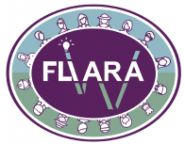A new guide published by the SWIFT Project is calling for the adoption of Gender Responsive Budgeting (GRB) as a tool to make European agricultural policies more inclusive and fair.
The report, How-to Manual on Gender Responsive Budgeting and Agricultural Policies, argues that the current agricultural system not only mirrors but also reinforces deep-rooted inequalities, leaving women and marginalised groups at a disadvantage.
Cultivating Inequalities in Farming
Despite significant progress in recent decades, the agricultural sector remains marked by structural inequalities. Education continues to follow highly gendered patterns, influencing the distribution of tasks both on and off the farm. Many women face what the report calls “double or triple working days,” leaving them with less time to participate in farmers’ organisations or decision-making processes.
Women’s contributions are often undervalued and under-recognised. The traditional model of the “family farm,” typically passed down through heterosexual marriage, continues to exclude people outside the cis-heterosexual norm.
The guide also highlights the plight of migrant workers, who remain central to the functioning of global and European agriculture. Female migrant workers, in particular, are disproportionately affected by poor working and living conditions, exacerbated by “cheap food” policies.
Gender Responsive Budgeting: A Tool for Change
GRB is defined as the integration of a gender perspective at all stages of the budgetary process. In the context of the EU’s Common Agricultural Policy (CAP), this means engaging farmers, policymakers, civil society organisations, and researchers alike.
The SWIFT report stresses that GRB is not a single measure but rather a combination of coordinated actions.
Lessons from Around the World
The guide draws on experiences from both the Global South and across Europe.
- In Ghana, experts working with Oxfam emphasised the need to train policymakers and civil servants in gender equality, highlighting that even goodwill at the governmental level requires strong implementation strategies.
- In Austria, every ministry must include at least one outcome objective linked to gender equality under its federal budget management system.
- In Poland, small-scale initiatives in GRB and “well-being budgeting” were observed at the local level, with scholars stressing the importance of raising awareness among policymakers, particularly in right-leaning governments.
Rethinking the CAP Budget
The report identifies several points in the CAP budget cycle where gender considerations can be embedded:
- The multiannual financial framework (MFF), which sets the EU budget.
- The European Agricultural Guarantee Fund (EAGF) and European Agricultural Fund for Rural Development (EAFRD).
- CAP regulations themselves.
- National Strategic Plans (NSPs), draughted by each member state.
At each of these levels, the SWIFT team found both encouraging initiatives and critical gaps.
Towards Intersectional Budgeting
The report argues that budgeting must go beyond gender alone, recognising how multiple forms of discrimination intersect. While gender budgeting has taken root in several countries, the authors stress the need to move towards intersectional budgeting.
They note that “well-being budgeting” can provide an entry point in contexts resistant to feminist approaches, provided that gender equality indicators are built in.
Policy Recommendations
The guide sets out several key recommendations for policymakers and women-led innovations (WLIs), including:
- Ensuring the participation of women and marginalised groups.
- Implementing GRB at local, national, and EU levels.
- Strengthening collaboration between civil society organisations.
- Providing gender equality training for ministries and civil servants.
- Enshrining GRB in law.
- Establishing oversight bodies with real power.
- Expanding access to gender-disaggregated data and research on inequalities.
Next Steps
The SWIFT Project invites stakeholders and policymakers to consult its How-to Manual on Gender Responsive Budgeting and Agricultural Policies, available in both English and Spanish.
For more insights, watch the video below and access the full manual.



